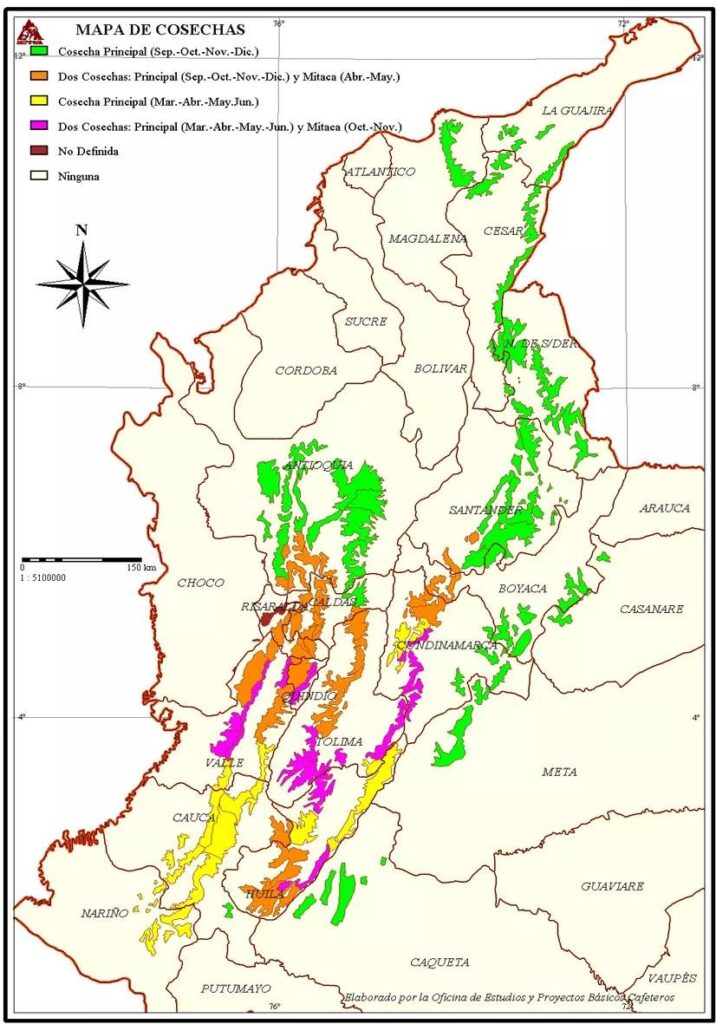Huila, Colombia
Huila is a department that has a population of 1,122,622 inhabitants, of which 679,667 (60.54%) people live in municipal capitals and 442,955 (39.46%) in the rest of the Huilense territory. This corresponds to 2.5% of the total Colombian population. The majority of the population is settled in the Magdalena valley, with epicenters in Neiva and Garzón due to the possibilities offered by the commercial-type agricultural economy, oil exploitation, the best provision of services and the road axes connected to the central axis that borders the Magdalena. The rest of the populations are located on the coffee belt, standing out Pitalito and La Plata, the North Subregion presents a decrease in its rural population, mainly attributable to the alterations of agricultural and oil activities on the landscape.
Cuaca, Colombia
Cauca Department (Spanish: Departamento del Cauca) is a Department of Southwestern Colombia. Located in the southwestern part of the country, facing the Pacific Ocean to the west, the Valle del Cauca Department to the north, Tolima Department to the northeast, Huila Department to the east, and Nariño Department to the south. Putumayo and Caqueta Departments border the southeast portion of Cauca Department as well. It covers a total area of 29,308 km², the 13th largest in Colombia. Its capital is the city of Popayán. The offshore island of Malpelo belongs to the department. It is located in the southwest of the country, mainly in the Andean and Pacific regions plus a tiny part (Piamonte) in the Amazonian region. The area includes 2.56% of the country.
Cauca del Valle, Colombia
Valle del Cauca, or Cauca Valley, is a department in western Colombia abutting the Pacific Ocean. Its capital is Santiago de Cali. Other cities such as Buenaventura, Buga, Cartago, Palmira and Tuluá have great economical, political, social and cultural influence on the department’s life. Valle del Cauca has the largest number of independent (i.e., nonmetropolitan) towns with over 100,000 inhabitants in the country, counting six within its borders. Buenaventura has the largest and busiest seaport in Colombia, moving about 8,500,000 tons of merchandise annually.
Caldas, Colombia
Caldas is a department of Colombia named after Colombian patriotic figure Francisco José de Caldas. It is part of the Paisa Region and its capital is Manizales. The population of Caldas is 998,255, and its area is 7,291 km². Caldas is also part of the Colombian Coffee-Growers Axis region along with the Risaralda and Quindio departments.
Tolima, Colombia
Tolima is one of the 32 departments of Colombia, located in the Andean region, in the center-west of the country. It is bordered on the north and the west by the department of Caldas; on the east by the department of Cundinamarca; on the south by the department of Huila, and on the west by the departments of Cauca, Valle del Cauca, Quindío and Risaralda. Tolima has a surface area of 23,562 km², and its capital is Ibagué. The department of Tolima was created in 1861 from a part of what was previously Cundinamarca.
Quindío, Colombia
Quindío is a department of Colombia. It is in the western central region of the country, crossed by the Andes mountains. Its capital is Armenia. It is famous for the quality of the coffee plantations, colorful architecture, benign weather, variety of hotel accommodations and tourist landmarks. This department is located in a strategic area, in the center of the triangle formed by the three main cities of the country: Bogotá, Medellín and Cali. Quindío is the second-smallest Colombian department (0.2% of the national territory) with 12 municipalities. Ethnographically and culturally, it belongs to the Paisa region.
Above information courtesy to Wikipedia.

Colombia Coffee Map, courtesy to Federación Nacional de Cafeteros de Colombia (FNC).
Kunde Coffee Platform
With our extensive industry experience, marketing knowledge and IT know-how, we wish to promote sustainable coffee industry and improve the accessibility for coffee farmer around the world.
Contact us
info - AT - kundecoffee.com
Office 302, No. 71, Huajing Road
Tianhe District, Guangzhou
Guangdong, China
Follow us on Wechat

© 2025 Guangzhou Kunde Coffee Co., Ltd.. All Rights Reserved.
粤ICP备2023060331号 |  粤公网安备 44010602011667号
粤公网安备 44010602011667号


